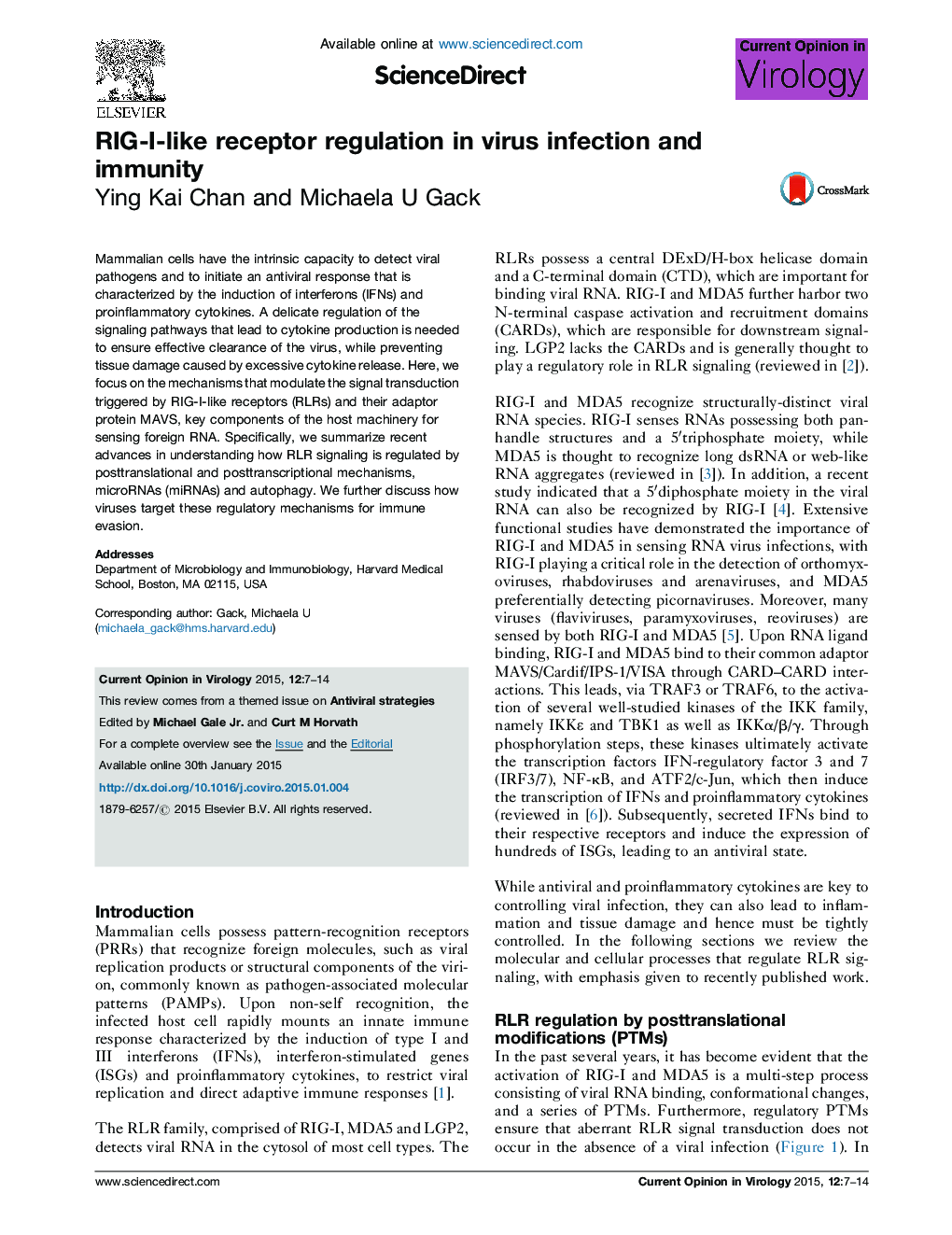| Article ID | Journal | Published Year | Pages | File Type |
|---|---|---|---|---|
| 5806682 | Current Opinion in Virology | 2015 | 8 Pages |
â¢A balance of phosphorylation and K63-linked ubiquitination regulates RIG-I.â¢RIG-I and MAVS functions are modulated by alternative splicing and translation.â¢Subcellular localization and autophagy regulate RLR signaling.â¢Viral pathogens manipulate the regulatory steps of RLR-MAVS activation.
Mammalian cells have the intrinsic capacity to detect viral pathogens and to initiate an antiviral response that is characterized by the induction of interferons (IFNs) and proinflammatory cytokines. A delicate regulation of the signaling pathways that lead to cytokine production is needed to ensure effective clearance of the virus, while preventing tissue damage caused by excessive cytokine release. Here, we focus on the mechanisms that modulate the signal transduction triggered by RIG-I-like receptors (RLRs) and their adaptor protein MAVS, key components of the host machinery for sensing foreign RNA. Specifically, we summarize recent advances in understanding how RLR signaling is regulated by posttranslational and posttranscriptional mechanisms, microRNAs (miRNAs) and autophagy. We further discuss how viruses target these regulatory mechanisms for immune evasion.
